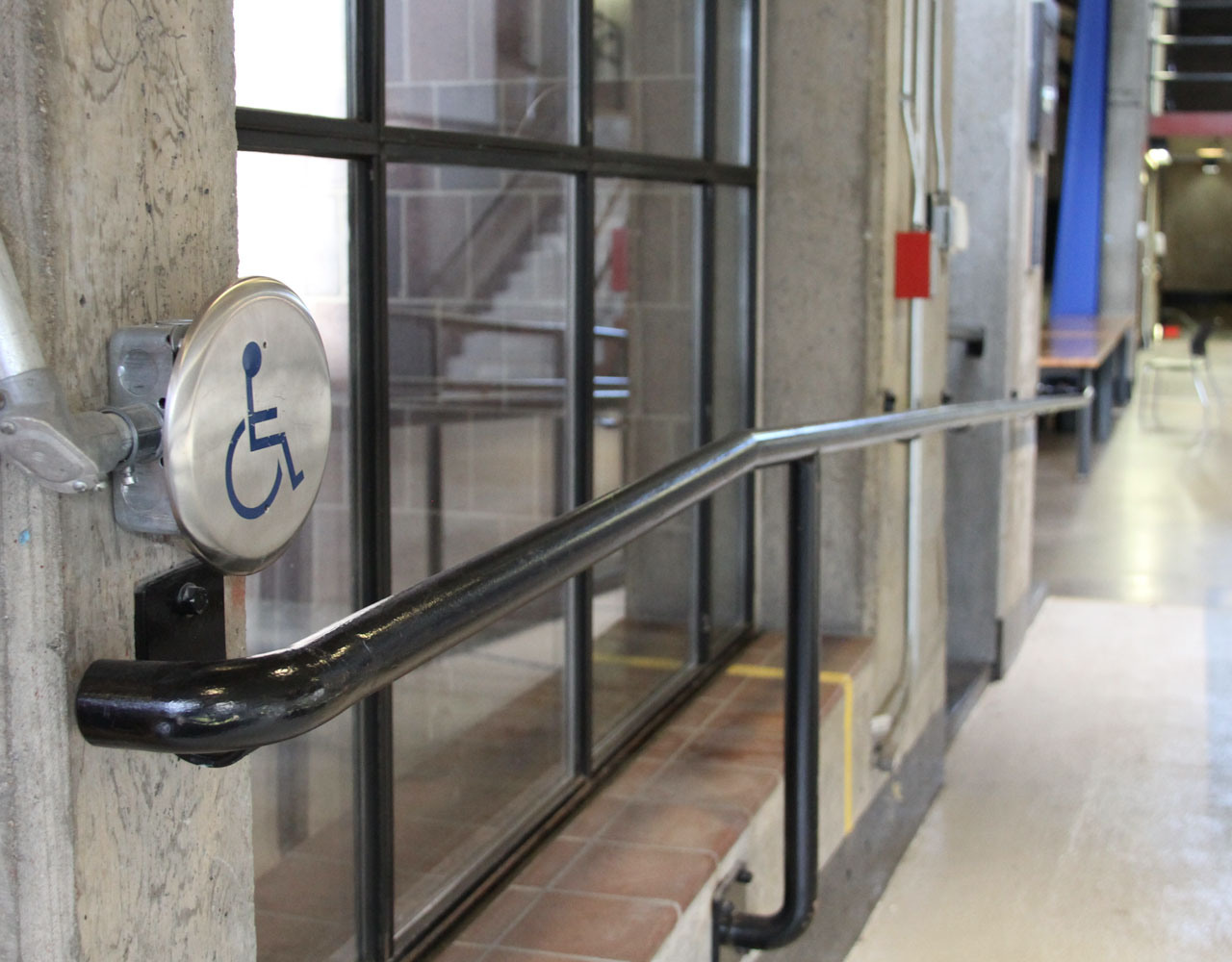With the start of the school year approaching, Carleton has been hard at work making the campus more accessible for students.
Carleton currently has many features that help make the campus more accessible, according to Matthew Cole, executive director of the university’s attendant services program.
According to Cole, red stripes across the sidewalks near main roads help those with low vision navigate the campus. Doors across campus come equipped with proximity readers and can automatically open to students. A new ramp coming from Residence Commons makes the neighbouring quad easier to navigate for those with mobility issues.
Cole added that a lot of work goes into designing signage on campus so that information can be accessed by those with low vision or other visual impairments.
“Accessibility is more than just doors and ramps,” Cole said.
Cole explained that the entire design of newer water fountains on campus, from the angle of the water, to the room underneath the fountain, to how hard the buttons must be pushed was designed with vision, mobility, and muscle impairment in mind.
“To someone who does not need an accessible water fountain, it’s not seen as accessible, but to someone who does, it is much appreciated,” he said.
Cole has managed the attendant services program at Carleton for 25 years. Established in 1988, the program runs 24 hours a day and 365 days a year, allowing students who need assistance to complete daily tasks such as getting ready in the morning, going to bed at night, and doing their laundry to access attendants.
“Carleton’s 24-hour attendant services is the only program of its kind in the world,” Cole said, adding the program attracts many international students and their families, from South Africa to Botswana to Japan.
The Carleton Disability Awareness Centre (CDAC) is another type of program rarely found in post-secondary schools. Brett Babcock and Céline Brown MacDonald, program co-ordinators at the CDAC, said Carleton is one of the most accessible universities in Canada because it is relatively new.
“Older universities were often designed without accessibility as a priority and lack helpful features, like having elevators or ramps near any stairs,” they said in a joint email. “In comparison to other universities, [Carleton is] quite new.”
The CDAC focuses on breaking barriers and destabilizing social stigma for students with disabilities, according to Babcock and Brown MacDonald.
Some accessibility issues still create barriers for students on campus. One commonly heard issue by the CDAC is wait times to access psychologists and psychiatrists at Health and Counseling Services. They said that hiring more staff would help create shorter wait times.
In addition, Babcock and Brown MacDonald said not all bathrooms on campus are fully accessible, and those that are can often be packed with students who do not necessarily need accessible features.
This year, the CDAC is focusing on bringing Braille signage onto campus for classroom numbers and washrooms.
Cole also said attendant services will be working to improve accessibility on campus for those with visual impairments. He mentioned a new wayfinding system is underway, which will allow students with visual impairments to be notified of where they are on campus through an application that operates through wifi.
“When we look at someone in a wheelchair, the fact that they wheel around instead of walk around isn’t the problem. The problem is that not all areas of society can be navigated with a wheelchair, or by people with disabilities,” Cole said.
Photo by Meagan Casalino






